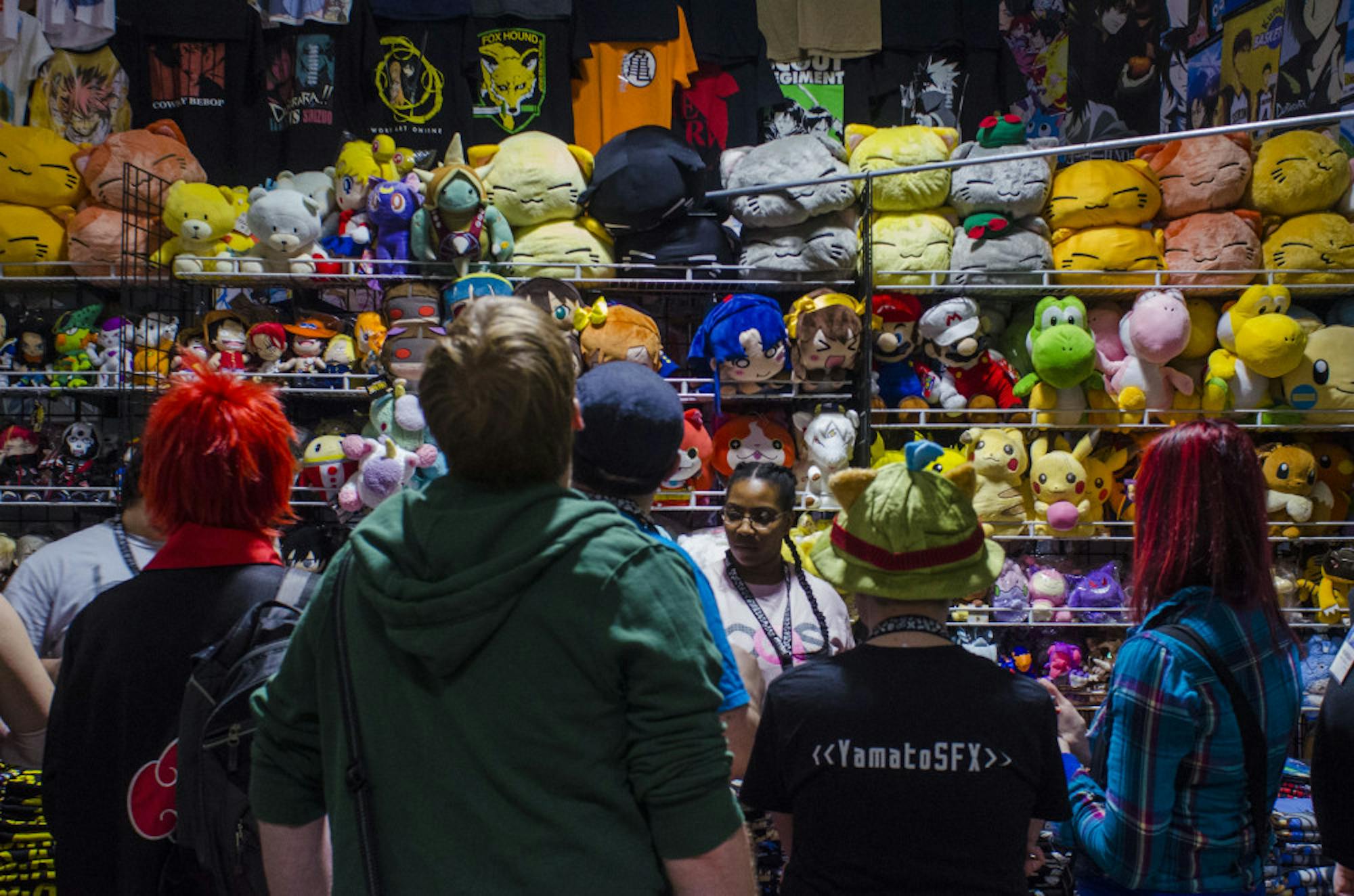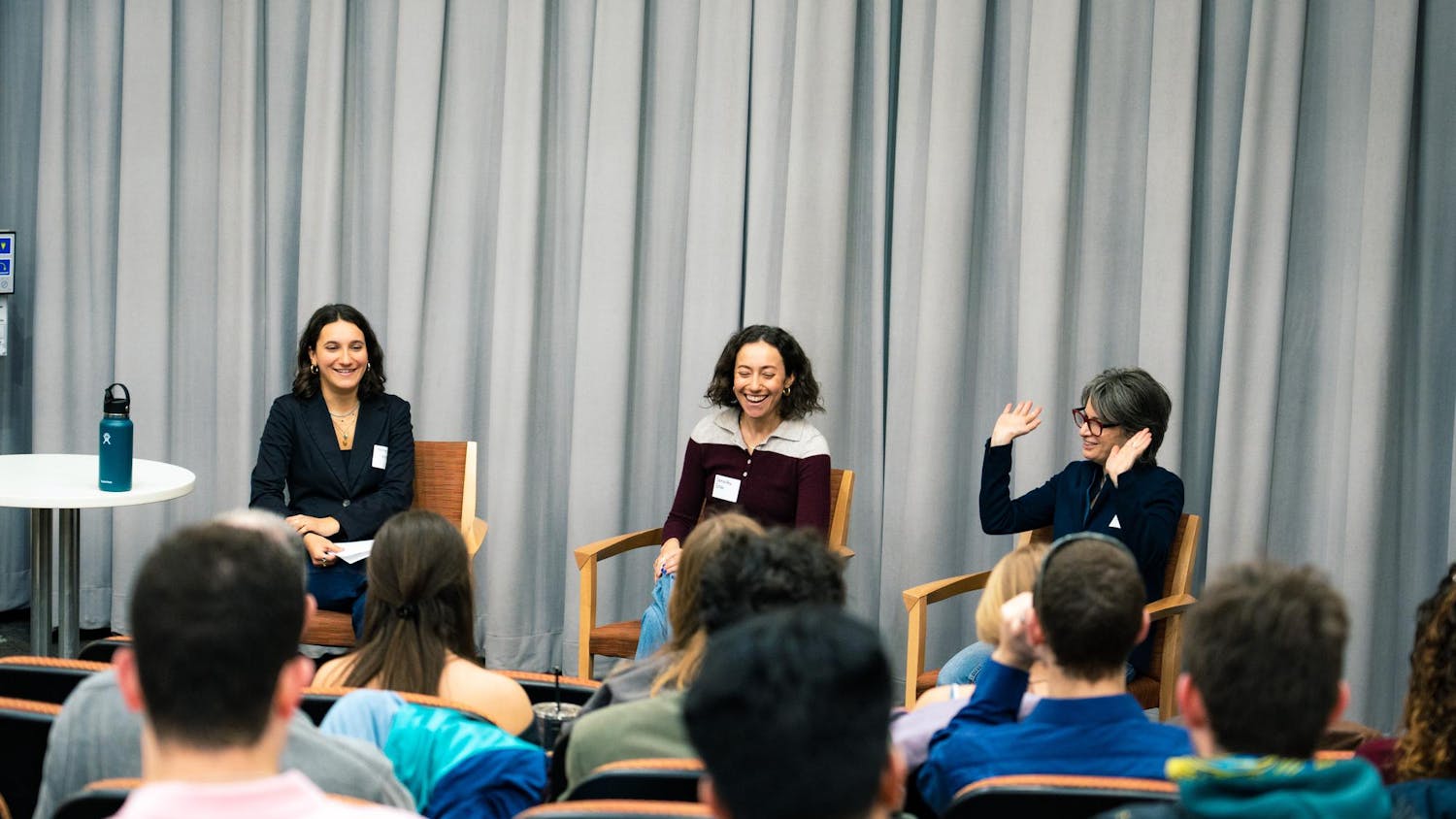FourTufts Anime Brigade members hosted panels at this past weekend’s Anime Boston convention that celebrates Japanese animation and pop culture.
Including the four panelists, 39 Brigade members and alumni attended the convention, which has grown to become the fifth largest anime convention in North America since its beginning in 2003. Over 25,000 estimated guests visited the Hynes Convention Center where the event was held to enjoy three days of anime merchandise, art, presentations, shows and celebrity guest appearances.
Senior Matthew Bogen, junior Lara Halamka and alumnus David Heilbrun (LA ’15) returned to the convention last weekend to present their panel, “LGBT in Anime: Yaoi, Yuri and Beyond” for the second year in a row. In addition, Bogen and junior Dalia Berkowitz also held separate panels analyzing popular video games.
“We’re thrilled that several members of our club were accepted to represent Tufts as panelists at the convention this year,” Bogen and Halamka, Brigade treasurer and chief, respectively, said. “The panels were a perfect opportunity to blend personal interests with an academic eye.”
In Berkowitz's Friday morning presentation, titled “‘Personal’ Philosophy,” she analyzed philosophical ideas found in the role-playing video games Persona 3 and Persona 4, focusing on Carl Jung’s theory of psychological development and his concept of the “persona,” or the image of oneself that one presents to the world.
Berkowitz said she was nervous to hold the panel but felt happy that she had had the chance to talk about some of her ideas.
“None of my friends will get it, but they’ll all humor me and listen to me,” she said. “I’m one of those people who believe that there’s philosophy in everything. That’s just how I interact with the world — through a philosophical lens.”
In Bogen's panel, “The FF7 Remake, Miss Cloud and Changing Culture,” which was held on Saturday morning, he analyzed the original FF7 game — otherwise known as Final Fantasy VII — that was released nearly 20 years ago in terms of its portrayal of gender, sexuality, race and terrorism. At the end of his presentation, he opened the floor to ask the audience of about 80 people what they believed the FF7 remake holds in store.
About 100 to 120 people attended Bogen, Halamka and Heilbrun’s Saturday night panel on LGBT representation in anime, which was also the final Tufts student-run panel of the weekend.
Bogen explained that he first thought of running the panel last year after exploring some options for hosting an LGBT theme night for the Brigade. In mainstream anime, he explained, there are two popular genres that depict same-sex couples: yaoi, which focuses on male-male romantic relationships, and yuri, which centers on female-female relationships. After doing some research, Bogen found that he was unhappy with the ways that LGBT individuals and relationships were often represented. He turned to Anime Boston to investigate the types of conversations being held by convention panelists.
“I looked up the [Anime Boston] schedule, because generally you find panels about everything here and found that there just hadn’t been panels about LGBT issues in the past couple years,” he said. “I feel that this is a really important topic that’s certainly relevant to many people, and if no one else is doing it and I want it to be there, then I have to.”
While Bogen, Halamka and Heilbrun were the only panelists to analyze LGBT representation at last year’s convention, this year Anime Boston featured at least six panels focusing on LGBT relationships in anime, including an “It Gets Better” presentation tailored for LGBT youth at the convention who were struggling with their identities.
Bogen, Halamka and Heilbrun said they have received very rewarding feedback on their presentation. This year, as well as last year, multiple attendees approached the panelists after the session to express their gratitude and to share personal stories about their experiences as LGBT anime fans, they said.
“It’s really wonderful to see those people who are personally touched,” Heilbrun said.
Despite these genre’s attention to same-sex couples, most series are not made for LGBT-identifying viewers, the panelists explained. They noted that most yaoi and yuri is written by straight women for a straight female audience. For this reason, Bogen said, portrays of LGBT relationships in anime are often distortions of reality and mimic male-female relationships.
The group members prefaced their presentation by acknowledging the challenges of criticizing media representations produced by a foreign culture.
Heilbrun suggested that the Japanese understanding of gender might be more performative in general, rather than reflective of an essential identity — contrary to the conception held more commonly in the United States.
“Think about whether this whole concept of LGBT identities [is] sort of a Western concept and think about maybe how these anime have a different way of looking at them,” he said. “But that doesn’t mean we can’t apply this concept of LGBT identities to anime. It just means we have to be aware of the cultures and some differences between them."
“I think it’s important to acknowledge that we are from a Western culture, and this is something that is a Japanese cultural item,” Halamka said after the presentation. “But because we’re viewing it in the U.S., we have to view it through a Western lens. We have no choice. We just need to remember that it’s not our native culture’s product.”
During the panel, Bogen focused on yaoi, explaining that male-male couples in particular tend to reflect heterosexual gender binaries, where one character is the seme, or masculine-coded partner, and the other is the uke, or feminine-coded partner. Moreover, consent in sexual interactions is virtually never considered in yaoi anime and flat out disregarded in the most problematic representations, he said.
Halamka presented on female-female relationships in yuri anime. The main problem with these hyper-cute female relationships, she explained, is that they almost never occur between women outside of middle and high school. The implication here is that female-female attraction is nothing more than a phase that ends after a certain age.
Heilbrun wrapped up the presentation with a discussion of transgender representation in anime, which most often takes the form of cross-dressing characters. These characters are often the butt of jokes and are interpreted in ways that reinforce the gender binary. He recommended one very positive exception — a series called “Wandering Son” by Shimura Takako — that gives a more realistic portrayal of a transgender character struggling to understand their identity.
Bogen, Halamka and Heilbrun said their goal was not to change panel attendees’ viewing habits but to get them to think more critically about the context of yaoi, yuri and series depicting transgender characters. Despite prominent media representation of same-sex couples, the LGBT rights movement in Japan is quite small and limited, they said.
“There’s nothing wrong with watching bad yuri or bad yaoi,” Halamka said. “It’s just acknowledging that real people are struggling with homosexuality. That shouldn’t be downplayed.”
“On one hand, it’s really positive in the sense that you see very public representations of queer genres,” Bogen said. “On the other hand, these genres are not really meant for a queer audience ... I’m personally critical about different elements of yaoi that I feel are not necessarily healthy representations of relationships, but then you delve into questions about whether is yaoi meant to be realistic. If it’s not, it may be acceptable that it’s not.”
Heilbrun acknowledged that the panel’s setting does affect their analysis of yaoi and yuri.
“Anime Boston is a fan convention,” he said. “Sometimes when you talk about things in an academic way it becomes too sterile. You’re just completely distanced from the enjoyment that we may get out of this media. It’s a fan convention, but I hope that we can be fans and also be a little critical.”
The three also acknowledged that few Japanese fans, apart from the guests of honor, seem to attend the convention. For this reason, they have little firsthand feedback from Japanese audiences of their analysis of LGBT representation.
Since Halamka is the sole panelist among the three who will remain enrolled at Tufts next year, she is unsure of what the future of the “LGBT in Anime” panel will be. Though she is thinking of holding a new panel that focuses solely on yuri next year, she feels it’s important that convention-goers continue to criticize LGBT representation in anime.
“Maybe now more people will take on the mantle,” she said.
For photo coverage of Anime Boston visit the Tufts Daily Photo blog Picture Tufts: http://picturetufts.tuftsdaily.com/2016/03/29/the-daily-goes-to-anime-boston/
Anime Brigade members present panels at Boston convention

Convention attendees wait in line to look at plushies at fan convention Anime Boston in the Hynes Convention Center on Friday, March 25.





